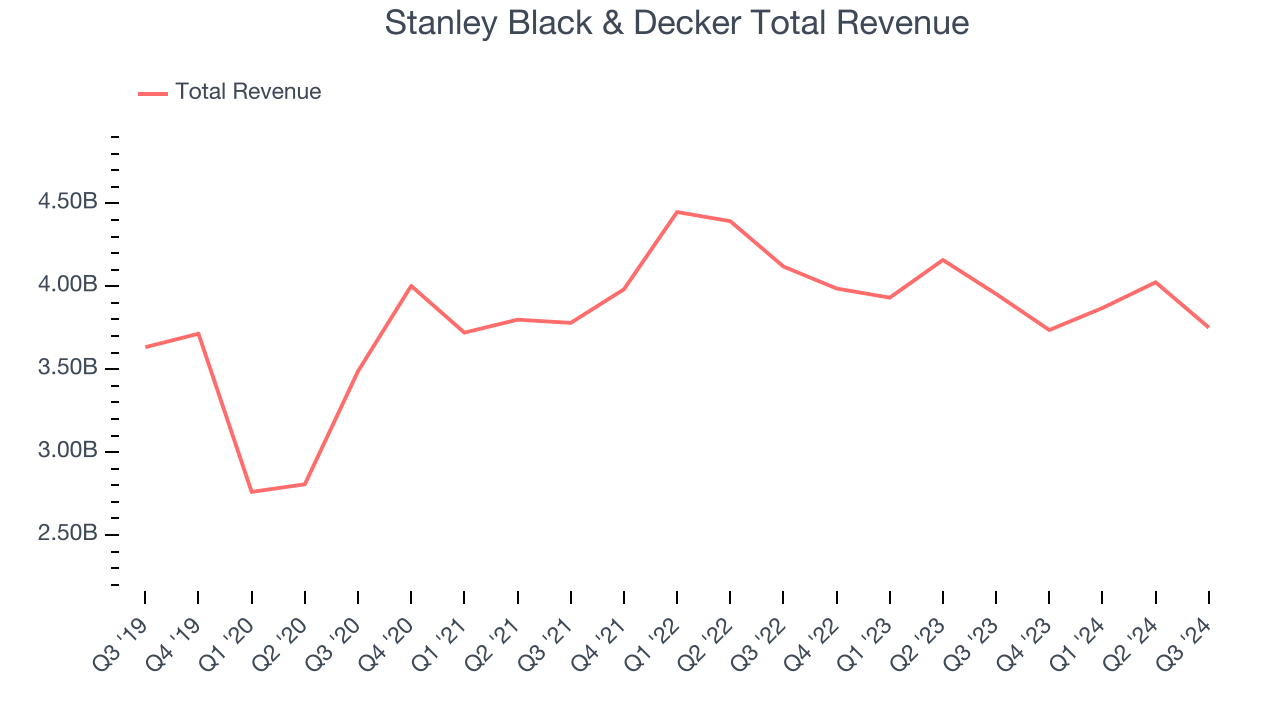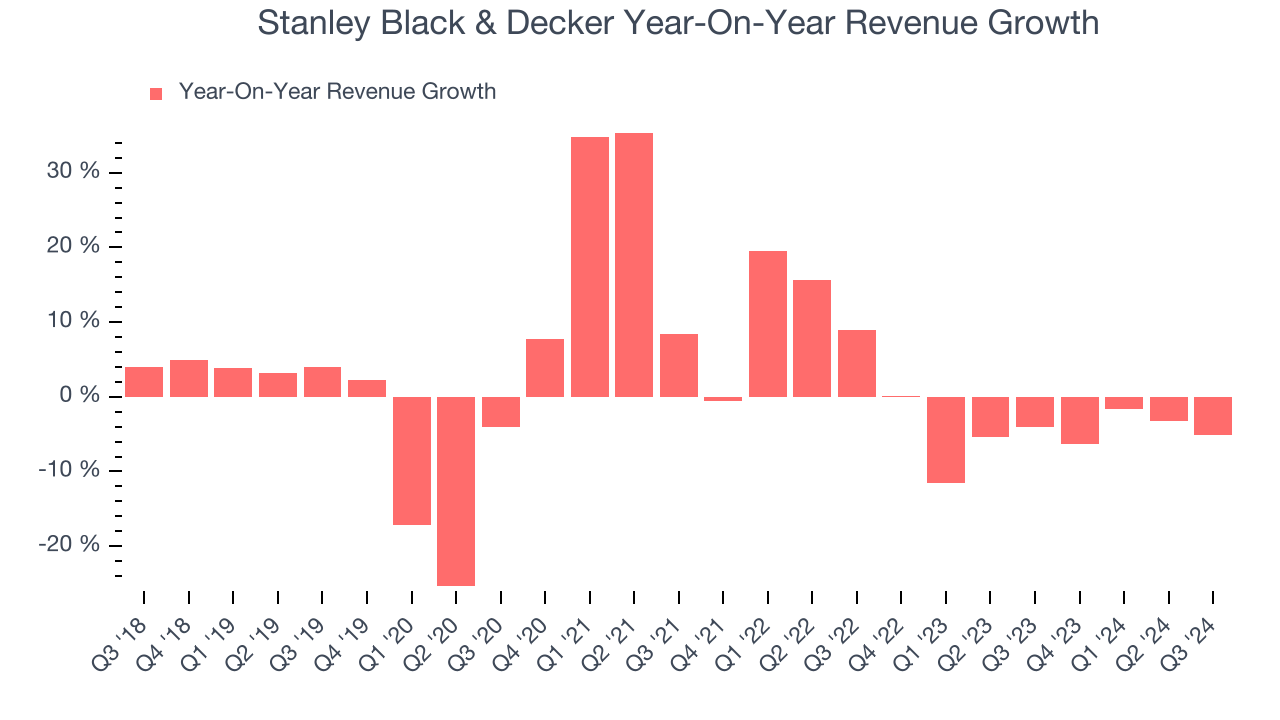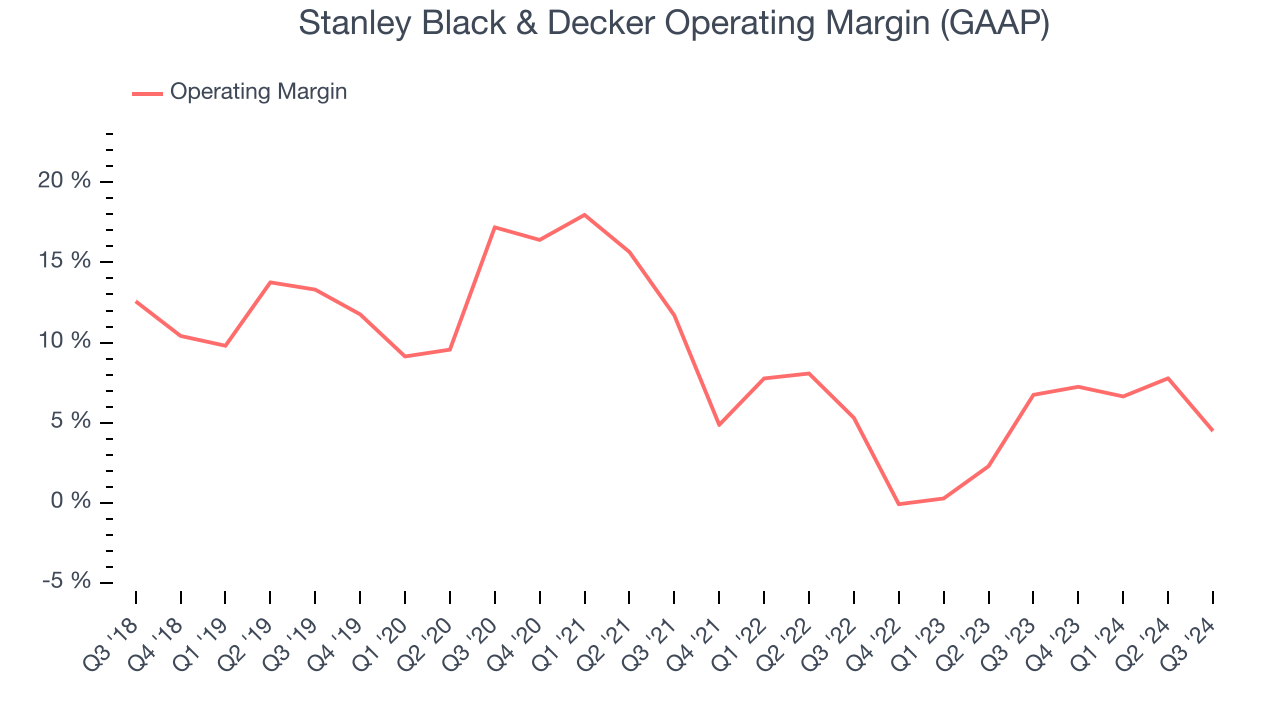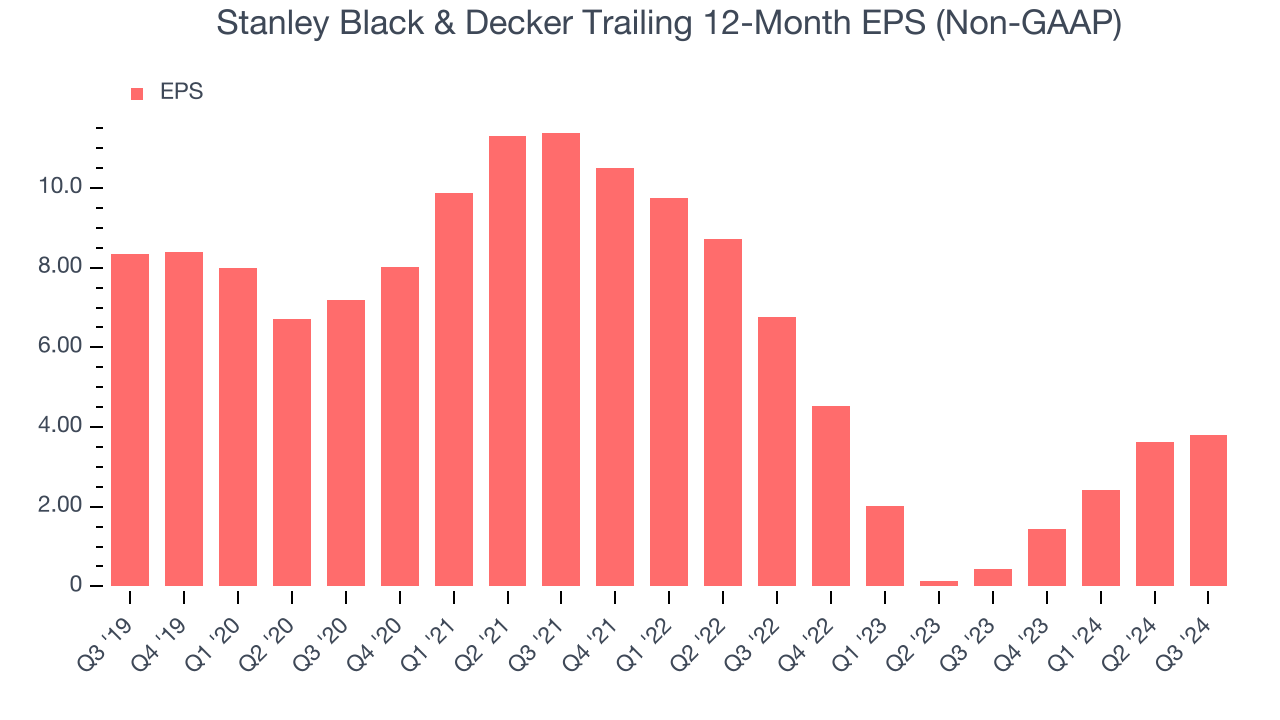Financial News
Stanley Black & Decker (NYSE:SWK) Misses Q3 Sales Targets

Manufacturing company Stanley Black & Decker (NYSE: SWK) missed Wall Street’s revenue expectations in Q3 CY2024, with sales falling 5.1% year on year to $3.75 billion. Its non-GAAP profit of $1.22 per share was 16.5% above analysts’ consensus estimates.
Is now the time to buy Stanley Black & Decker? Find out by accessing our full research report, it’s free.
Stanley Black & Decker (SWK) Q3 CY2024 Highlights:
- Revenue: $3.75 billion vs analyst estimates of $3.80 billion (1.4% miss)
- Adjusted EPS: $1.22 vs analyst estimates of $1.05 (16.5% beat)
- Management reiterated its full-year Adjusted EPS guidance of $4.10 at the midpoint
- Gross Margin (GAAP): 29.9%, up from 27.6% in the same quarter last year
- Operating Margin: 4.5%, down from 6.7% in the same quarter last year
- Free Cash Flow Margin: 5.3%, down from 9.2% in the same quarter last year
- Market Capitalization: $15.85 billion
Donald Allan, Jr., Stanley Black & Decker's President & CEO, commented, "In the third quarter we continued to deliver gross margin improvements as well as robust cash generation, all as a result of solid execution against our operational priorities. While a weak consumer and automotive production backdrop impacted organic revenue, we capitalized on relative bright spots and delivered our sixth consecutive quarter of DEWALT growth as well as higher sales in aerospace fasteners.
Company Overview
With an iconic “STANLEY” logo which has remained virtually unchanged for over a century, Stanley Black & Decker (NYSE: SWK) is a manufacturer primarily catering to the tool and outdoor equipment industry.
Professional Tools and Equipment
Automation that increases efficiency and connected equipment that collects analyzable data have been trending, creating new demand. Some professional tools and equipment companies also provide software to accompany measurement or automated machinery, adding a stream of recurring revenues to their businesses. On the other hand, professional tools and equipment companies are at the whim of economic cycles. Consumer spending and interest rates, for example, can greatly impact the industrial production that drives demand for these companies’ offerings.
Sales Growth
Reviewing a company’s long-term performance can reveal insights into its business quality. Any business can have short-term success, but a top-tier one sustains growth for years. Regrettably, Stanley Black & Decker’s sales grew at a weak 1.4% compounded annual growth rate over the last five years. This shows it failed to expand in any major way, a rough starting point for our analysis.

We at StockStory place the most emphasis on long-term growth, but within industrials, a half-decade historical view may miss cycles, industry trends, or a company capitalizing on catalysts such as a new contract win or a successful product line. Stanley Black & Decker’s history shows it grew in the past but relinquished its gains over the last two years, as its revenue fell by 4.7% annually. 
This quarter, Stanley Black & Decker missed Wall Street’s estimates and reported a rather uninspiring 5.1% year-on-year revenue decline, generating $3.75 billion of revenue.
Looking ahead, sell-side analysts expect revenue to remain flat over the next 12 months. Although this projection indicates the market thinks its newer products and services will fuel better performance, it is still below the sector average.
When a company has more cash than it knows what to do with, buying back its own shares can make a lot of sense–as long as the price is right. Luckily, we’ve found one, a low-priced stock that is gushing free cash flow AND buying back shares. Click here to claim your Special Free Report on a fallen angel growth story that is already recovering from a setback.
Operating Margin
Stanley Black & Decker has done a decent job managing its cost base over the last five years. The company produced an average operating margin of 8.4%, higher than the broader industrials sector.
Analyzing the trend in its profitability, Stanley Black & Decker’s annual operating margin decreased by 5.6 percentage points over the last five years. Even though its margin is still high, shareholders will want to see Stanley Black & Decker become more profitable in the future.

In Q3, Stanley Black & Decker generated an operating profit margin of 4.5%, down 2.3 percentage points year on year. Conversely, its gross margin actually rose, so we can assume its recent inefficiencies were driven by increased operating expenses like marketing, R&D, and administrative overhead.
Earnings Per Share
Analyzing revenue trends tells us about a company’s historical growth, but the long-term change in its earnings per share (EPS) points to the profitability of that growth – for example, a company could inflate its sales through excessive spending on advertising and promotions.
Sadly for Stanley Black & Decker, its EPS declined by 14.6% annually over the last five years while its revenue grew by 1.4%. This tells us the company became less profitable on a per-share basis as it expanded.

Diving into the nuances of Stanley Black & Decker’s earnings can give us a better understanding of its performance. As we mentioned earlier, Stanley Black & Decker’s operating margin declined by 5.6 percentage points over the last five years. This was the most relevant factor (aside from the revenue impact) behind its lower earnings; taxes and interest expenses can also affect EPS but don’t tell us as much about a company’s fundamentals.
Like with revenue, we analyze EPS over a shorter period to see if we are missing a change in the business.
For Stanley Black & Decker, its two-year annual EPS declines of 25.2% show it’s continued to underperform. These results were bad no matter how you slice the data.In Q3, Stanley Black & Decker reported EPS at $1.22, up from $1.05 in the same quarter last year. This print easily cleared analysts’ estimates, and shareholders should be content with the results. Over the next 12 months, Wall Street expects Stanley Black & Decker’s full-year EPS of $3.79 to grow by 53.2%.
Key Takeaways from Stanley Black & Decker’s Q3 Results
We enjoyed seeing Stanley Black & Decker exceed analysts’ EPS expectations this quarter. On the other hand, its EPS forecast for the full year missed and its revenue fell short of Wall Street’s estimates. Overall, this was a weaker quarter. The stock traded down 3.1% to $99.75 immediately after reporting.
Stanley Black & Decker may have had a tough quarter, but does that actually create an opportunity to invest right now?What happened in the latest quarter matters, but not as much as longer-term business quality and valuation, when deciding whether to invest in this stock. We cover that in our actionable full research report which you can read here, it’s free.
More News
View More




Recent Quotes
View More
Quotes delayed at least 20 minutes.
By accessing this page, you agree to the Privacy Policy and Terms Of Service.



